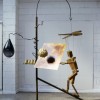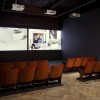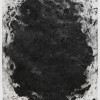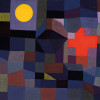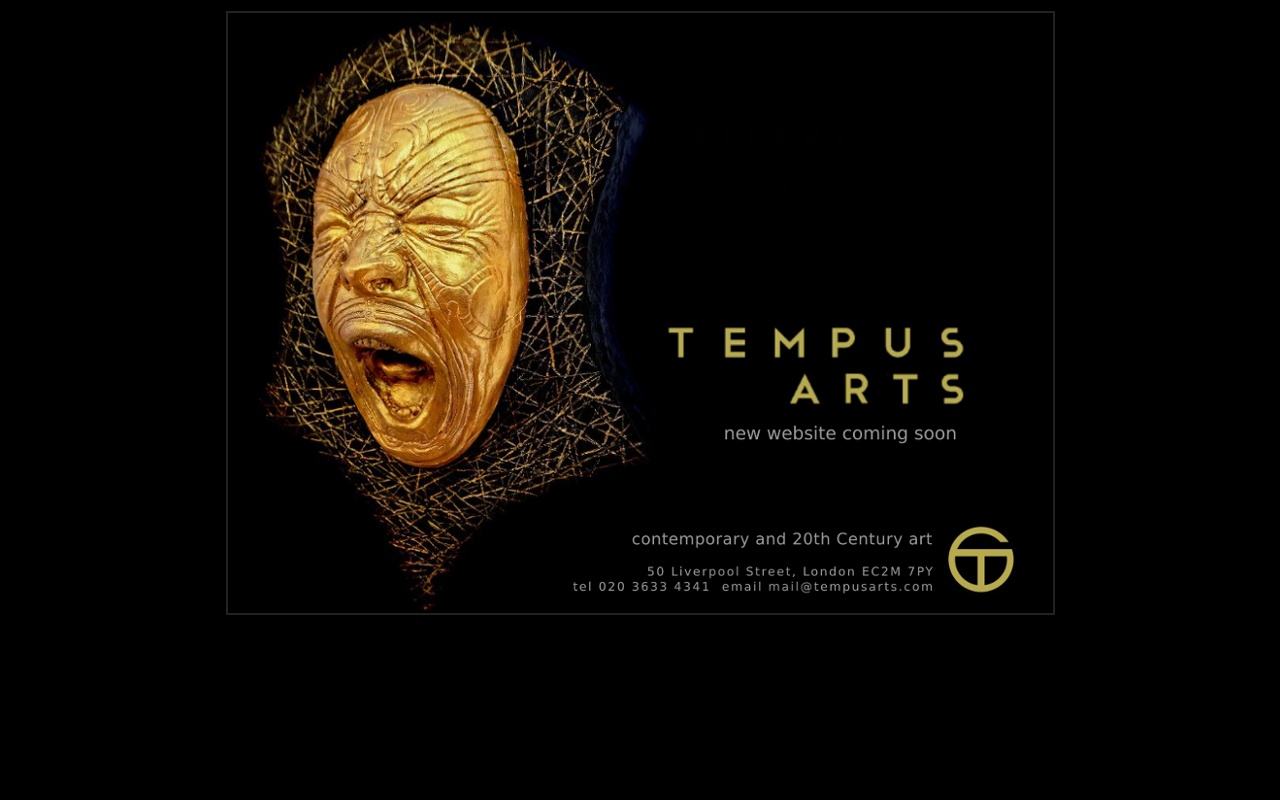Landy, one of the Young British Artists (YBAs), is best known for his work Breakdown (2001), where he systematically destroyed all of his physical possessions. As the current Rootstein Hopkins Foundation Associate Artist at the National Gallery, the exhibition – which is displayed in a two-room gallery at the heart of the museum on Trafalgar Square – brings together his work for the residency, which began in 2010. Inspired particularly by early Renaissance paintings of the saints that appear throughout the Gallery, focal point of Landy’s exhibition are five larger-than-life size kinetic sculptures.
In part, each of these sculptures take elements directly from Old Master paintings. Saint Apollonia (2013), for example, has the body and face of the saint in Lucas Cranach the Elder’s 1506 painting, Saint Genevieve and Apollonia. Unlike this oil painting, the saint is sculpted over ten feet tall, and, at the press of a button, will smack herself in the mouth with a pair of pliers holding a bloody tooth. Situated in the first room of the exhibition, the resulting hollow thud is a shock for the viewer compared to the low murmur which fills the rest of National Gallery.
Dotted around the second room of Saints Alive, the other sculptures are likewise large and loud; the hand of doubting St Thomas smacks Christ’s naked torso in the ribs; a fist clenching a rock strikes the chest of St Jerome. In Multi-saint (2012), a sword repeatedly cracks down upon the bald head of the disjointed figure. This sculpture combines five saints into one, with the violence of the gesture deriving from Carlo Crivelli’s painting Saint Michael (c.1476).
While the influence of the earlier religious paintings is clear, for Landy’s sculptures there is no divine authority, just mechanical, human power. Visitors push the large buttons on the floor, powering the exposed, rusting mechanisms that make the sculptures move for approximately 20 seconds. There is also a giant wheel, which visitors can spin. Inspired by Pintoricchio’s painting, Saint Catherine of Alexandria with a Donor (c.1480-1500), and the wheel on which the saint was tortured, it acts as a wheel of fortune: telling the user’s fate in golden letters around the rim. The piece seems to suggest that it is as much luck and personal effort that determines your fate, as it is divine mandate.
While on the one hand the nature of the exhibition subverts the religious message of the saints’ stories, on the other it accesses the gruesome force of the legends that made them great to begin with. Gazing at an odd, pre-Twentieth Century painting of an unknown saint in the National Gallery, it can be easy to bypass the deeper meaning. However, Landy’s sculptures force the viewer to take notice. With unnerving sounds, direct contact and jarring motion, the viewer’s senses come alive as much as the saints themselves.
When the National Gallery invited Landy to be their artist in residence, they took a chance on a man who does not identify as a painter or sculptor. The Rootstein Hopkins residency is designed to specifically promote a continuing relationship between contemporary artists and the Old Masters, and the ability of the latter to act as a source of inspiration. According to Landy, did he know much about the stories of the saints in the history of art, and Saints Alive does give a sense of discovering these stories with both interest and alarm.
Beyond the three-dimensional pieces, a number of sketches and collages hang on the walls, and here Landy’s thought process seems to present itself. For the most part, these works consist of blown up reproductions of the National Gallery’s paintings, linked with pencil drawings of gears and mechanisms like the ones that connect the kinetic statues. In these pieces the viewer gets the full effect of the magnitude of the saints’ suffering again. St Francis’ body shows not just one stigmata but many; each mark or flame carefully cut out from every painting of the saint in the gallery and pasted all over his body. A multitude of St Jerome’s arms fan out around his body, with each holding a cutout picture of a rock. The position of the saint’s arms and the repetitive motion of his self-flagellation suggest that his purifying act mirrors the impure thoughts of which Jerome attempted to cleanse himself.
So who, these works ask, is this violence satisfying? Is it really God? Or is it actually a very human – very alive – cast of saints? Or is it actually the laypeople – the painters and the viewers – who would happily gaze at the old paintings again and again without grasping the message of the story?
Landy’s sculptures don’t let the viewer escape the visceral nature of the suffering saints. They make it upsetting, perplexing and unforgettable.





